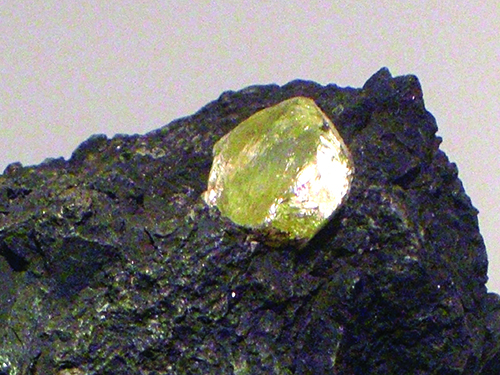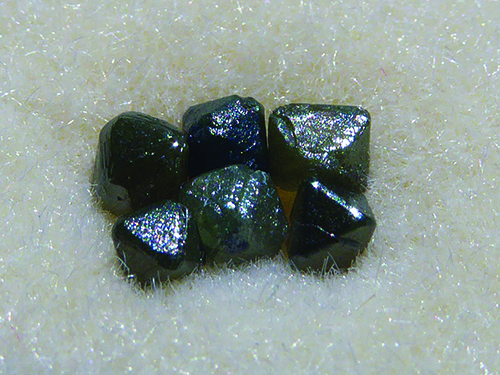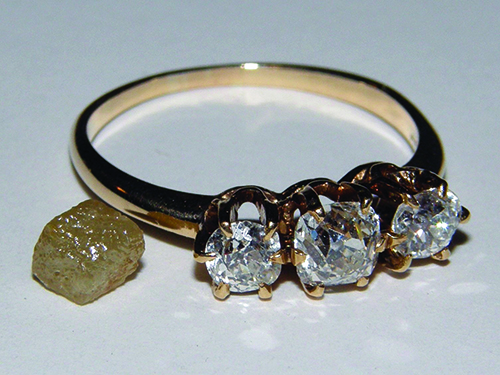
By Jim Brace-Thompson
The diamond is one fabled gemstone! For example, google “Hope Diamond” to see all the legends associated with just this one stone said to bring misfortune to its owners. So much lore has grown up around diamonds that it would fill the pages of this magazine for the rest of the year to capture even a portion. Jack Ogden wrote a book about this very topic, published in 2018, Diamonds: An Early History of the King of Gems. I’ll relate just two of the many facts—and fictions—Ogden explores, along with other myths and legends.

Per Ogden, diamond mining originated in India. Most specimens came from riverbeds, where they were found in gravel. The Valley of Gems was especially renowned, but there was a problem: it had sheer cliffs and was filled with poisonous snakes!
Legend says locals tossed meat into the valley. Eagles snatched up pieces along with diamonds that stuck to the meat. All that was left to do was collect diamonds from the eagles’ nests, although I’m not sure which is more daring: confronting poisonous snakes or a mad eagle!
Because they are the hardest of minerals, diamonds proved impossible to cut, so the earliest diamonds in jewelry were stones of a natural octahedral shape. Some preferred it that way. They claimed altering a diamond destroys its magic powers. Eventually, cleaving, shaping, and polishing methods were developed, but such methods were closely kept secrets and, as Ogden relates, rumors began to emerge. One was that diamonds could be cut, but only if soaked in goat blood!

Ancient Greeks thought diamonds protected against poison and evil, whereas Hindus thought a flawed stone could invite misfortune.
In general, diamonds were viewed as symbols of wisdom, self-confidence, and power, probably because only powerful rulers could afford them. Today, they are used in engagement rings to signify enduring love, and they mark 60th anniversaries or a “diamond jubilee.” If you were lucky enough to be born in April, a diamond is your birthstone!
Many more legends abound around diamonds in general and individual stones: the Hope Diamond, the Blue Diamond of the Crown, the Koh-i-Noor, the Shah Diamond, the Regent Diamond, the Cullinan I and II, the Tiffany Diamond, and the Sancy Diamond, among others. Some are famous for long histories and owners who have included sultans and slaves, kings and queens, industry titans and movie stars. Still others are infamous for legendary curses and daring thefts.
All photos courtesy Jim Brace-Thompson.
Author: Jim Brace-Thompson
 Jim began and oversees the AFMS Badge Program for kids, has been inducted into the National Rockhound & Lapidary Hall of Fame within their Education Category, and is the president-elect for the American Federation of Mineralogical Societies.
Jim began and oversees the AFMS Badge Program for kids, has been inducted into the National Rockhound & Lapidary Hall of Fame within their Education Category, and is the president-elect for the American Federation of Mineralogical Societies.
Contact him at jbraceth@roadrunner.com.
If you enjoyed what you’ve read here we invite you to consider signing up for the FREE Rock & Gem weekly newsletter. Learn more>>>
In addition, we invite you to consider subscribing to Rock & Gem magazine. The cost for a one-year U.S. subscription (12 issues) is $29.95. Learn more >>>


 Hide i
Hide i










